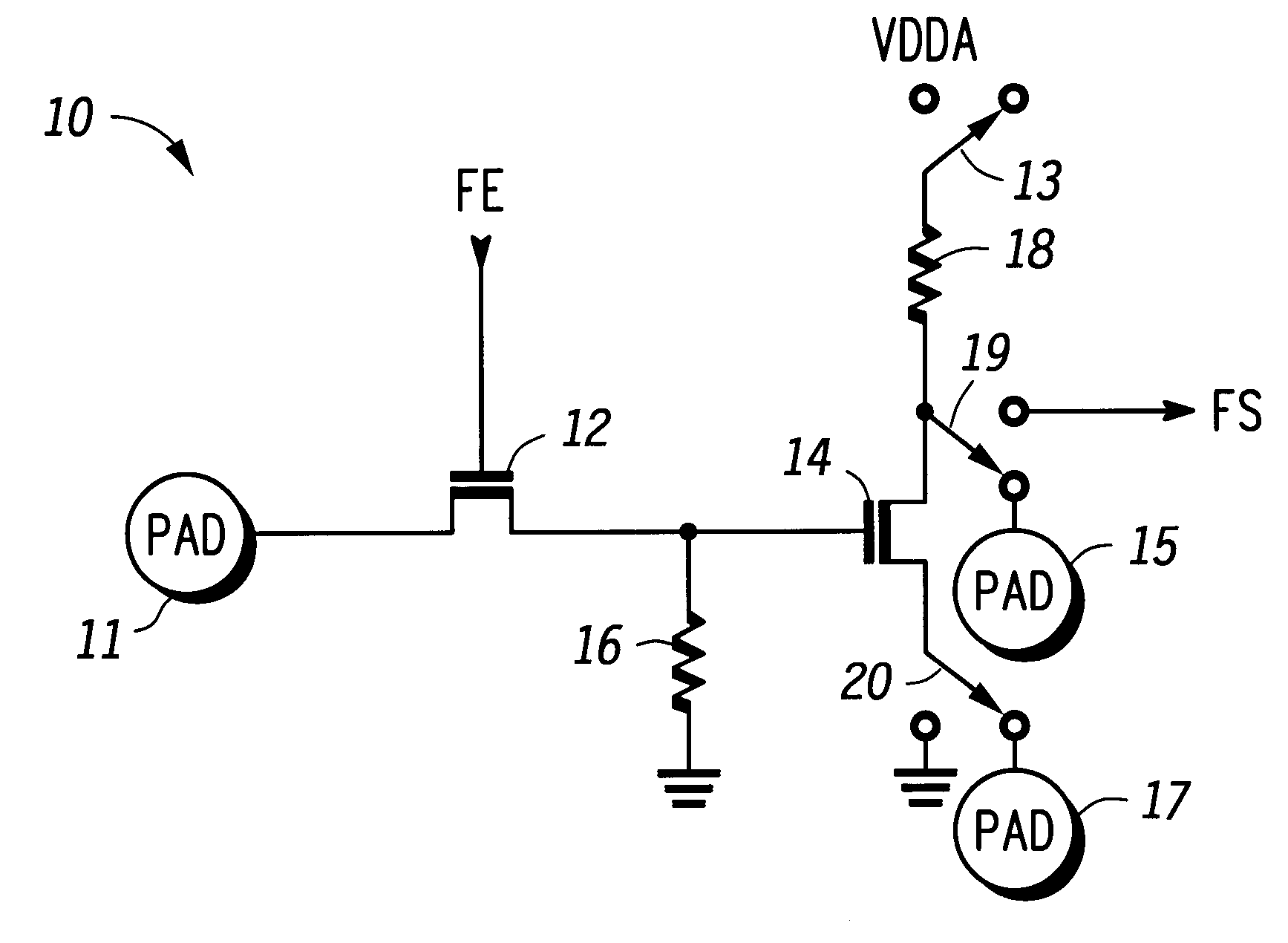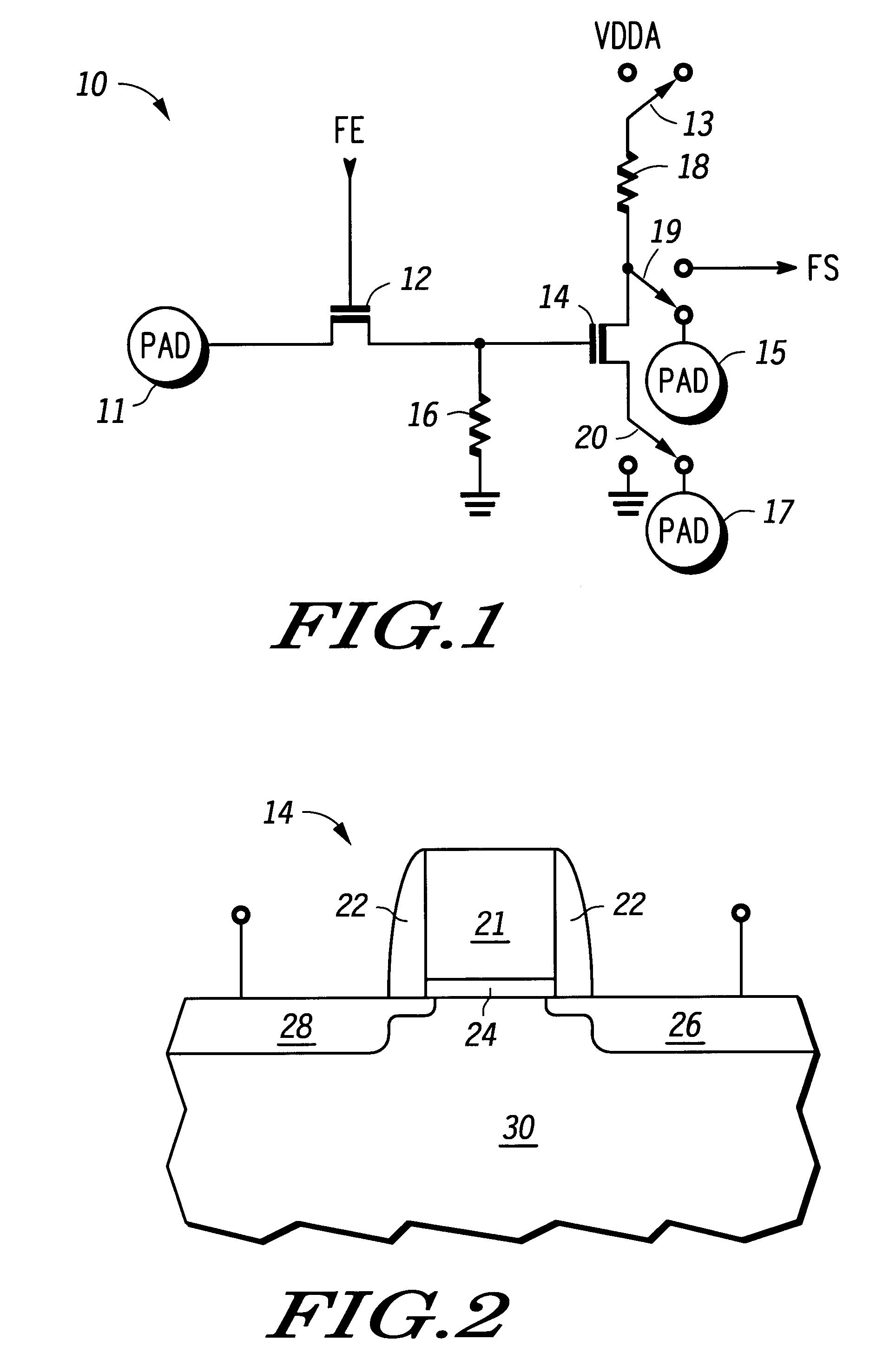Anti-fuse circuit and method of operation
a technology of anti-fuse circuit and anti-fuse, which is applied in the direction of emergency protective circuit arrangement, and emergency protection arrangement for limiting excess voltage/current, etc., and can solve the problems of difficulty in blowing the fuse, difficulty in using copper fuses, and difficulty in ensuring that the entire copper line has been completely opened
- Summary
- Abstract
- Description
- Claims
- Application Information
AI Technical Summary
Problems solved by technology
Method used
Image
Examples
Embodiment Construction
An anti-fuse is achieved by using a fuse transistor as a normal transistor in its non-conductive state as a high impedance state for an un-programmed condition and using the anti-fuse transistor that has had its gate dielectric forced into a conductive condition as a low impedance as the programmed state. This programmed state is achieved by applying a relatively high voltage to the gate of the fuse transistor to cause it to be programmed and thus to be permanently conductive. The anti-fuse transistor is held in a non-conductive condition to provide the un-programmed state. A circuit coupled to the anti-fuse transistor generates a signal to indicate the state of the fuse transistor. This signal can then be used to implement a function such as redundancy in a memory.
Shown in FIG. 1 is an anti-fuse circuit 10 comprising a pad 11, a transistor 12, a switch 13, a transistor 14, a pad 15, a resistor 16, a pad 17, a resistor 18, a switch 19, and a switch 20. Transistor 12 has a gate for r...
PUM
 Login to View More
Login to View More Abstract
Description
Claims
Application Information
 Login to View More
Login to View More - R&D
- Intellectual Property
- Life Sciences
- Materials
- Tech Scout
- Unparalleled Data Quality
- Higher Quality Content
- 60% Fewer Hallucinations
Browse by: Latest US Patents, China's latest patents, Technical Efficacy Thesaurus, Application Domain, Technology Topic, Popular Technical Reports.
© 2025 PatSnap. All rights reserved.Legal|Privacy policy|Modern Slavery Act Transparency Statement|Sitemap|About US| Contact US: help@patsnap.com


